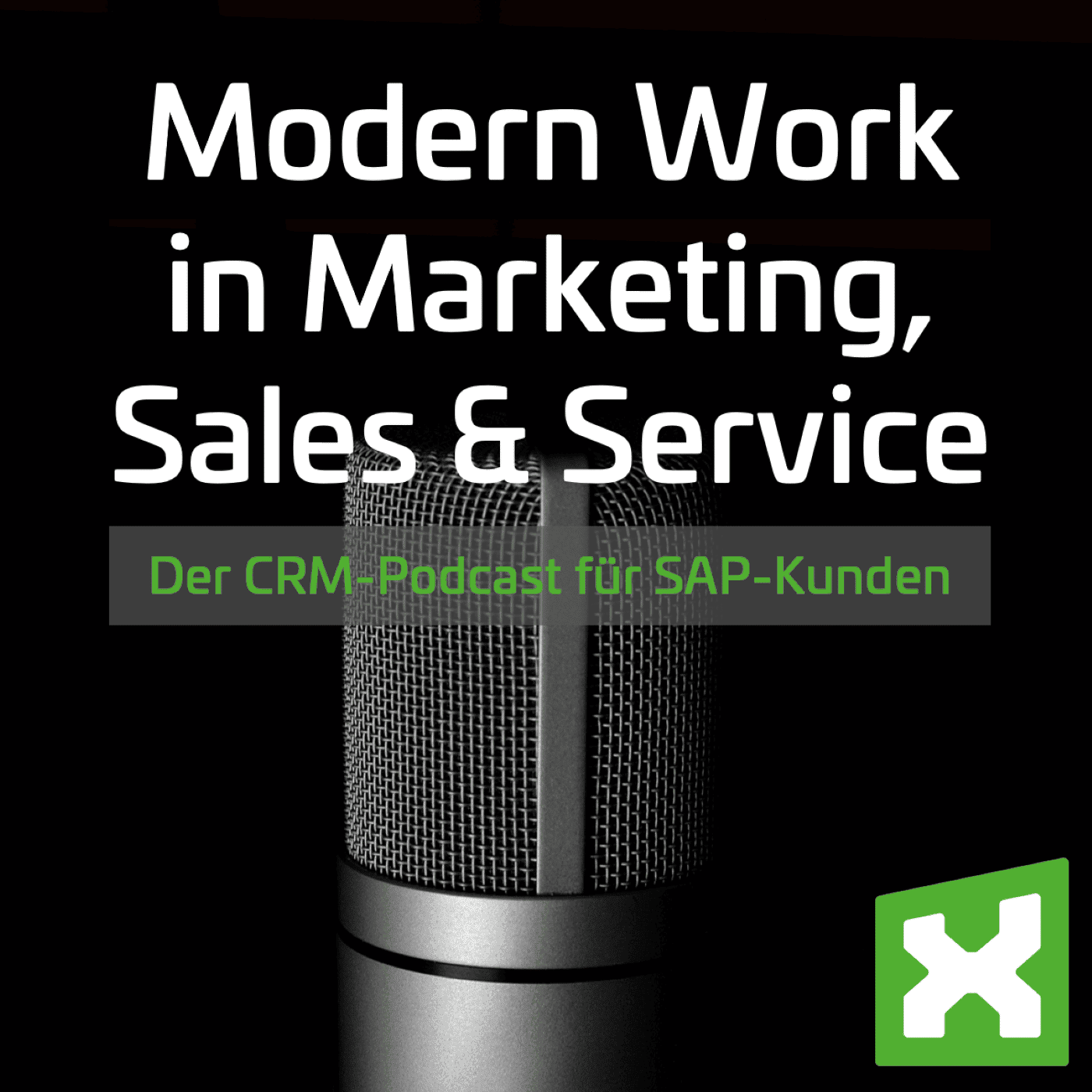Modern Work with CRM – what’s behind it?
The term “modern work” has been on everyone‘s lips for years and is constantly being discussed in the course of advancing digitization. In the course of the Corona pandemic, this term got a real boost, when suddenly everyone who was able to, had to work from home. Entire industries have digitized their workplaces almost overnight – often with the tools of Microsoft.

The Zukunftsinstitut – which is regarded as the leading think tank for trend and futuristic research – counts New Work as one of the 12 megatrends that are regarded as a major driver of change.
If you enter this term into a search engine today, you will see a wide variety of topics around Microsoft 365, which place their entire portfolio under this keyword, as well as contributions to remote work and home office. All these topics are summarized under the buzzword Modern Work.
As a CRM provider, we understand the Modern Workplace from a procedural point of view as the optimization of activities and work steps within the scope of the given possibilities of a company. We focus very strongly on the processes in marketing, sales and service and their interaction with CRM.
CRM processes are often still considered as separate processes
CRM basically describes first of all “only” a system in which customer data is managed, and in which the marketing, sales and service departments typically get a holistic view of the customer – the well-known “360-degree view”. In many companies, CRM processes are therefore considered separately as relevant processes for the marketing, sales and service departments. However, it is more correct to see the CRM processes in the context of a holistic view of all business processes and here as an important part that keeps not only the marketing, sales and service departments informed, but also adjacent departments that make their contribution to the overall process but do not use the CRM itself.
And this brings us back to the topic of modern work in the context of CRM. In order to take a closer look at this abstract term in the context of CRM processes, we have compiled some use cases for which cross-departmental collaboration is also important.
Quotation without double data storage
A good example is the preparation of quotations. This process brings together information from different areas, e. g. from work preparation, technical sales or product management. Some of these users often do not have CRM access, but at certain points they still participate in the creation of quotations.
As a result, documents are now filed redundantly in this process. Person A e. g. works on the offer document and saves it locally on his PC. Person B receives the version of the offer and stores the new version on a central drive. Person C does not have access to the drive at first and needs to request and get it set up. After he or she has made the changes, the updated document is stored in your own OneDrive. This process could now be further developed with further deposition scenarios. What this example is intended to illustrate is how important it is to consider what an optimal overall process might look like. How do you manage not to have redundant data and that all parties involved work into only “one truth” so that the sales representative can also be sure that he has the latest version of the offer.
Service process: Providing automated information
A classic service process here, for example, is the interaction of dispatchers and a service technician who is active on site. For the service technician, it is of course advantageous if he receives the relevant data for his deployment automatically (e. g. where is his work assignment, who is his customer, which machine is defective, etc. ). This can then be done via a message via e-mail, teams or even via push message in his service technician app.
Marketing process: participant selection
Or let‘s look at the area of marketing. Here, for example, the target group selection that is made in the CRM and then later used again for the Marketing Automation Tool should always be automated, so that different excellists or target groups are not used.
So there are many starting points in which you can optimize processes and make them easier for users with new tools and provide them with the information they need right in the process step. And this is often also in CRM processes not always the interface CRM itself, but the interface Microsoft 365, Outlook or Teams.
Only when CRM and ERP work together can processes be efficiently designed
Finally, we would like to address the issue of integration. The question that arises in this context: How do Modern Work, CRM and the ERP system actually relate to each other?
First of all, it should be said that with your CRM system and the associated processes in the areas of marketing, sales and service, you should always consider the integration with the ERP system. Because the ERP system contains most of the information and data needed for the processes in marketing, sales and service – the ERP is, so to speak, the Golden Record.
Of course, the first look is at the processes in the different areas, but in the end it is about where the relevant data is located and how we get that information displayed in certain systems.
In summary, it can be said that the interaction or integration of the two systems ERP and CRM is indispensable and has an influence on the entire company processes and thus also on the topic of modern work. If CRM and ERP work together, resources can be used optimally, processes can be designed more efficiently and decisions can be made more informed.
About the author



